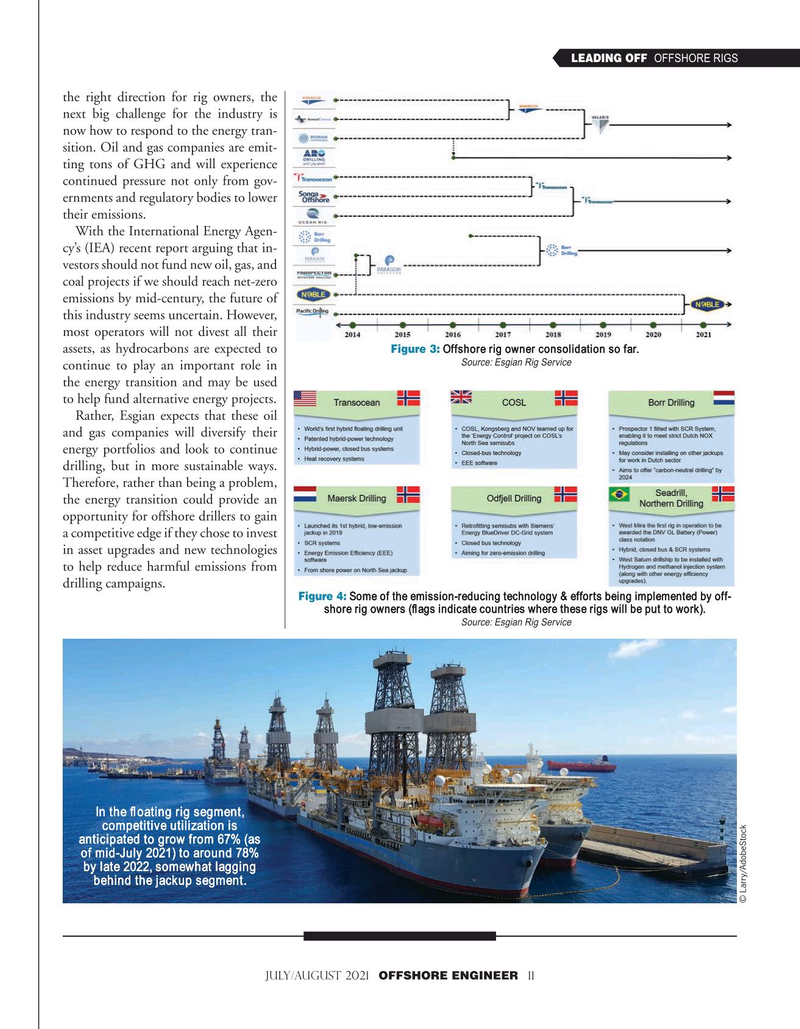
Page 11: of Offshore Engineer Magazine (Jul/Aug 2021)
The Robotics Revolution
Read this page in Pdf, Flash or Html5 edition of Jul/Aug 2021 Offshore Engineer Magazine
LEADING OFF OFFSHORE RIGS the right direction for rig owners, the next big challenge for the industry is now how to respond to the energy tran- sition. Oil and gas companies are emit- ting tons of GHG and will experience continued pressure not only from gov- ernments and regulatory bodies to lower their emissions.
With the International Energy Agen- cy’s (IEA) recent report arguing that in- vestors should not fund new oil, gas, and coal projects if we should reach net-zero emissions by mid-century, the future of this industry seems uncertain. However, most operators will not divest all their assets, as hydrocarbons are expected to
Figure 3: Offshore rig owner consolidation so far.
Source: Esgian Rig Service continue to play an important role in the energy transition and may be used to help fund alternative energy projects.
Rather, Esgian expects that these oil and gas companies will diversify their energy portfolios and look to continue drilling, but in more sustainable ways.
Therefore, rather than being a problem, the energy transition could provide an opportunity for offshore drillers to gain a competitive edge if they chose to invest in asset upgrades and new technologies to help reduce harmful emissions from drilling campaigns.
Figure 4: Some of the emission-reducing technology & efforts being implemented by off- shore rig owners (fags indicate countries where these rigs will be put to work). Source: Esgian Rig Service
In the foating rig segment, competitive utilization is anticipated to grow from 67% (as of mid-July 2021) to around 78% by late 2022, somewhat lagging behind the jackup segment. © Larry/AdobeStock
JULY/AUGUST 2021 OFFSHORE ENGINEER 11

 10
10

 12
12